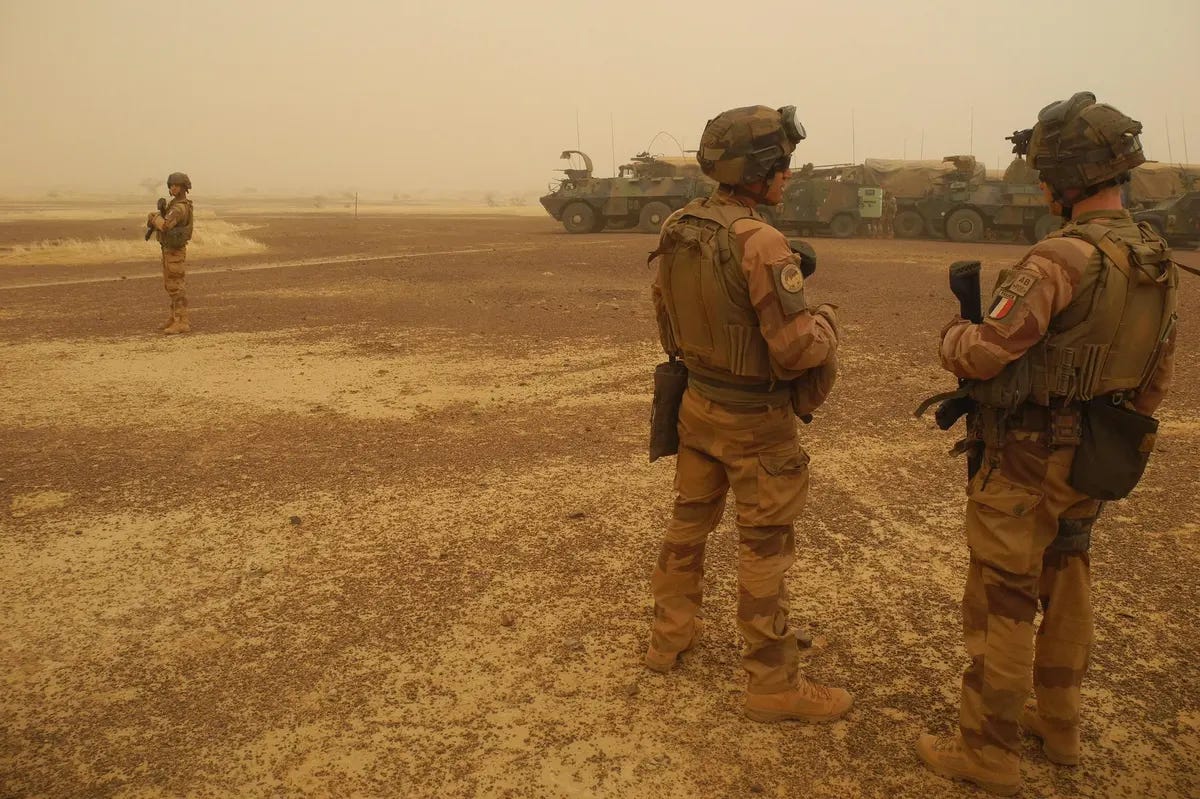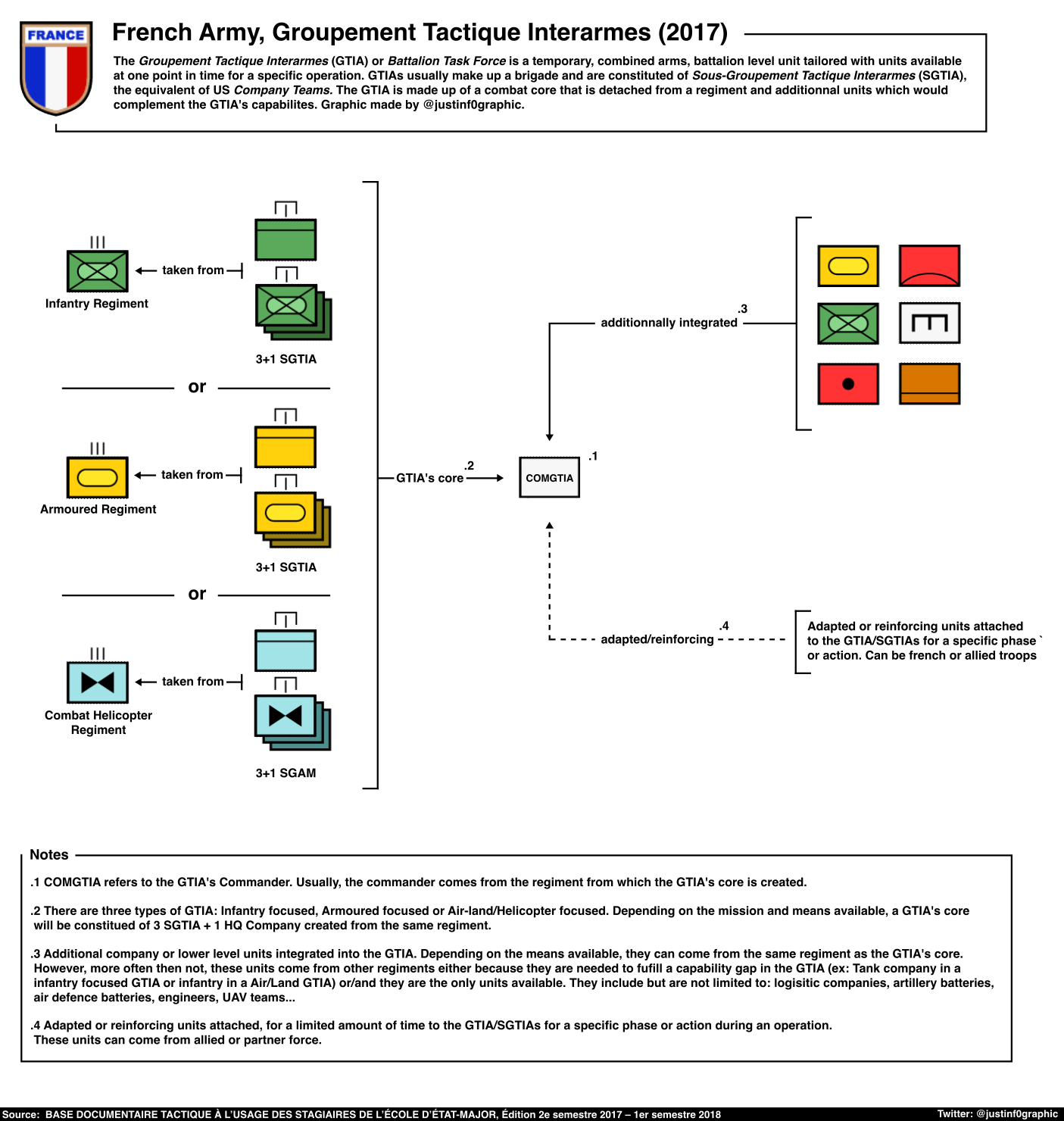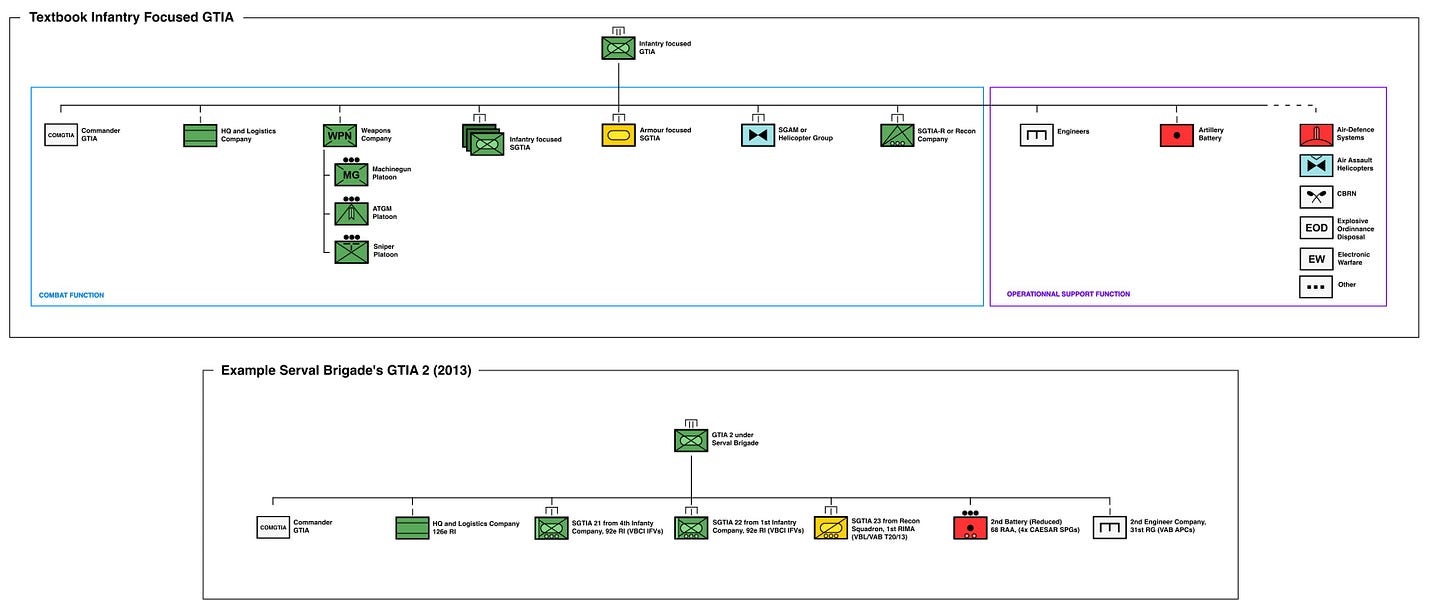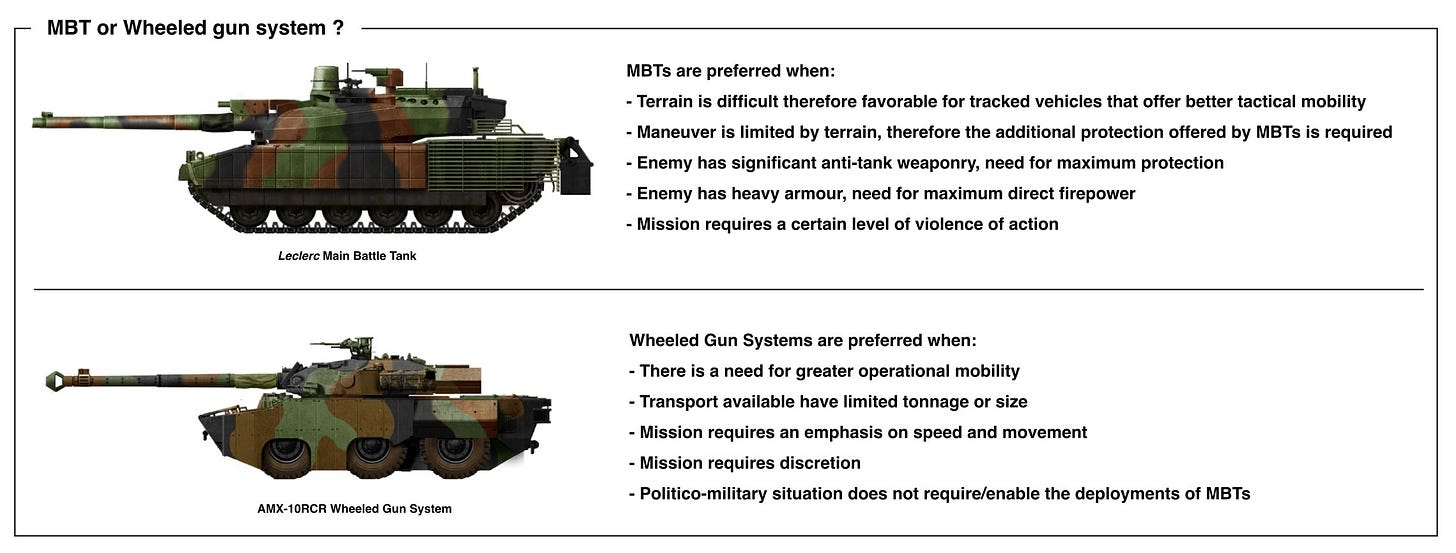Understanding France's basic fighting formation
Groupement Tactique Interarmes (GTIA)
Here is a short article with everything you need to know about France’s basic fighting formation: the GTIA
Background
By the late 1980s, France had essentially two armies. One was focused on the continental threat and relied on a heavier force manned by conscripts. The other was a lighter and smaller professional force tailored for expeditionary operations abroad, namely in France’s former colonies. After the fall of the Soviet Union, France launched a drastic transformation of its army by choosing to end conscription and switch to a fully professional model. This brought about the reduction of the size of the army and a reorganisation in how the Armée de Terre was structured.
Corps and divisions were dissolved and replaced by combined arms brigades constituted by regiments. However, regiments were not the basic fighting formation. France adopted the Groupement Tactique Interarmes (GTIA), or Combined Arms Tactical Group, as the basic fighting structure. The GTIA is essentially a battalion-sized task force tailored for a specific operation with units available at one point in time.
Structure
All information here comes from a French Army textbook published in 2017, BASE DOCUMENTAIRE TACTIQUE À L’USAGE DES STAGIAIRES DE L’ÉCOLE D’ÉTAT-MAJOR.
Basic principles
The centre of the GTIA is its commander (COMGTIA), from which units will be attached under his command to fulfil the mission he has been tasked with. A GTIA has three possible dominants: infantry-focused, armoured-focused or, Heliborne-focused. As a rule, a GTIA will receive an HQ unit and three companies from the same regiment that will form the core of the task force. Additional units are then integrated to complete the GTIA’s capabilities. They can be integrated at the battalion level or directly within the core companies to create Sous Groupement Tactique Interarmes (SGTIA), which are essentially combined arms company teams. Depending on the means available, they can come from the same regiment as the GTIA’s core. However, more often than not, these units come from other regiments to fulfil a capability gap (ex: tank company in an infantry-focused GTIA) or/and they are the only units available.
Infantry-dominant GTIA
The Infantry-focused GTIA is constituted of a core of 1 HQ + 3 Infantry Companies, usually taken from the same infantry regiment. Additional infantry complements that come in the form of weapon companies, recon, and artillery are then directly integrated at the battalion level or within core companies to create SGTIA. Combined arms complements are then added to complete the capabilities of the GTIA. They include but are not limited to tank/wheeled gun systems, helicopter groups and engineers.
The textbook GTIA sets out what would be the ideal structure for an infantry-focused GTIA. In addition to the core, the GTIA would have a tank company, recon company, helicopter group, engineer support units and an artillery battery. However, there is a difference between what a textbook GTIA would require and the reality of what is available, which means the French army usually needs to make do and does not deploy textbook GTIA. This is why GTIA 2 under the Serval Brigade has a different structure.
Armour-dominant GTIA
The Armour-focused GTIA is constituted of a core of 1 HQ + 3 Tank Companies or 2 Wheeled gun system companies. Similarly, additional complements that come in the form of infantry companies, recon and artillery are then directly integrated at the battalion level, and additional engineer units are also added.
France relies on two platforms that fit the ‘tank’ role, namely, the Leclerc MBT and the AMX-10RC, to be replaced by the ERBC Jaguar. From the French army’s perspective, both platforms play a similar role and have the same mission set. However, due to their different design, they each bring characteristics that correspond to distinct environments. Both platforms are paired with a specific troop carrier. Therefore, Armour GTIAs tend to be centred either around the duo Leclerc/VBCI or AMX-10RC/VAB.
SGTIA
Before moving on, I would like to mention SGTIAs. SGTIA is essentially the same principle as GTIAs but at the company level. These can be integrated directly within a GTIA or deployed independently. It shows that this approach of improvised force constitution is present at multiple levels of the French Army.
In this case, most of the SGTIA is provided by the 13e DBLE, but it is reinforced by a platoon of AMX-10RCR that likely came from another brigade within the 6e BLB.
Heliborne GTIA
Similarly to the two previous types of GTIA presented, the GTIA AER is constituted of at least an HQ and three flights of helicopters that are centred around either an attack helicopter platform, transport helicopter or a mix of both. These are then reinforced by armour, infantry, engineers or artillery, as well as appropriate logistics.
One thing to note regarding heliborne GTIAs. It is possible that no other elements are attached to the GTIA. The Groupement aéromobile (GAM) would stay centred around its heliborne assets to directly support other GTIAs in the brigade rather than having its own combined arms elements directly integrated within it.
SGAM
The sous-Groupement aéromobile (SGAM) is based on the same working principle as SGTIA but for Heliborne flights. The textbook differentiates four types of SGAM:
Fires-dominated SGAM: Primalry comprised of attack helicopters such as the TIGRE HAD (ATGM equipped) / HAP (unguided rockets, A2A missiles) or Gazelle
Surety SGAM: This SGAM would be comprised of either TIGRE HAP or Gazelle, with the possibility of having transport helicopters for casualty evacuation or logistics use.
Fires and manoeuvre-dominated SGAM: Primalry constituted of troop transport helicopters and attack helicopters to escort them.
Mixed SGAM: Operates a mix of transport and attack helicopters to ensure the widest range of missions.









